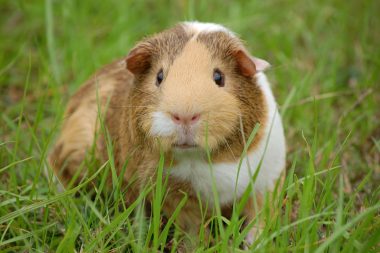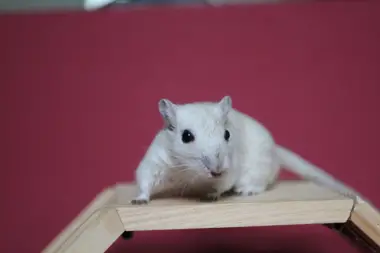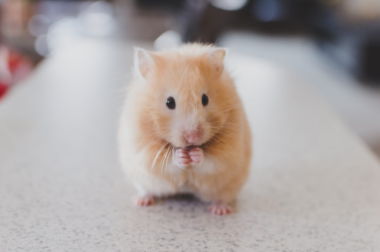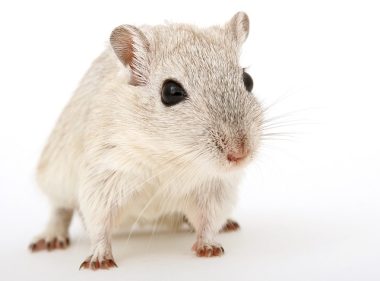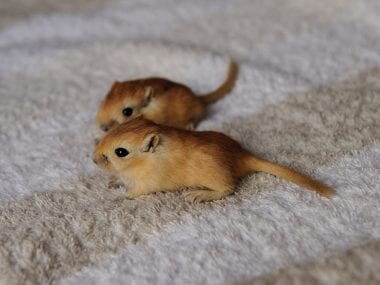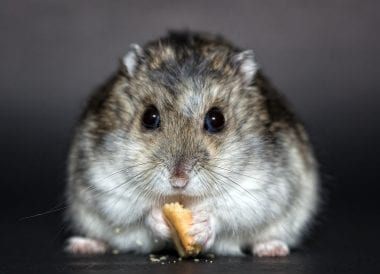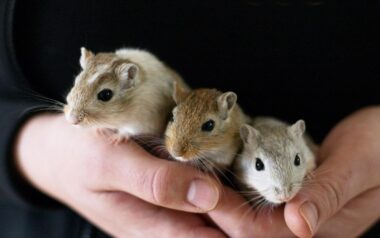Gerbil from the Gerbillinae subfamily is one of the 110 species of Asian, Indian, and African rodents, including jirds and sand rats. One Mongolian species of the gerbils is a hardy and gentle animal that is a popular pet in North America.
Before you start to breed gerbils, it is important that you have new homes for the pups. The average litter size for gerbils is eight pups, and they might get pregnant again immediately after giving birth. In case you are planning to keep all of them, you will need cages to separate the pups into same-sex groups. That is why you also should know how to sex a gerbil.
Breeding gerbils
The whole process of gerbil breeding can take about four months, starting from mating between male and female to the first litter leaving home. As the pups grow old and are about 4 to 5 weeks old, the mother gives birth again, and the cycle continues. So, before you start breeding gerbils, make sure that you have enough money, energy, and time to do the process. When it comes to mating and taking care of their pups, gerbils are naturals. They are amazing parents who don’t need a lot of guidance. However, this doesn’t mean that you shouldn’t do anything to help them out with the pups. Read on to learn everything to know about gerbil sexuality and how to sex a gerbil:
Equipment
Before you start breeding the gerbils, it is important that you have the right supplies and equipment. Here is what you will need:
● A big enough gerbilarium for the pups, and their mother and father.
● A wire mesh screen to introduce the female and male gerbils through the split cage method.
● Extra water bottle so that the pups can drink
● Extra cages where the pups can live until they find their new home
● Soft nesting material like hay or plain tissue paper (you should use digestible materials and not anything made from fabric)
Even if you are not planning to keep the gerbil pups, it is crucial that you have this equipment. Otherwise, in case you aren’t able to find them new homes, you won’t be able to keep them anywhere. Gerbils start breeding when they are only 12 weeks old. So, you have to separate them before this point. For this, you should know how to sex a gerbil.
Introducing the gerbils
Once you have all the breeding equipment for your gerbil, you can introduce the breeding pair. The first step is to sex the gerbil to make sure that they are a male and a female.
Sexual dimorphism is the difference between the female and male of any species, which means that both sexes can be of different sizes and have different organs or shapes. They might also have different colors or patterns. Sexual dimorphism is not so obvious in gerbils. The females and males of the species don’t have different coats, so you will have to look closer to know the difference.
Sexual differences
The best and surest way of determining the sex of the gerbil is through sexual organs. Male gerbils will have a scrotum and a penis, and females will have a vagina, just like other animals. Also, females of the species have internal organs assisting in the creation and development of pups, this equipment including ovaries and a womb. Male gerbils won’t have these organs. Instead, they have testes that produce sperm. Adult gerbils will have larger testes as their size is proportional to the amount of sperm they produce. But, the problem is that these differences are not visible easily from the outside. Most of these are internal differences. So, telling the difference between the sexes through these organs won’t be possible until you dissect them, which is clearly not an option.
Size
The average size of a fully-grown adult gerbil is about four inches. Their tail is almost the same size as their body. In many animals, you can use the size as a criterion for differentiating between the females and males of the species. However, this doesn’t work with gerbils. The male gerbils have a bigger body than the females and if you had a cage with a lot of gerbils, you might be able to notice the difference. However, this difference is very small and is not consistent enough to differentiate between females and males. In most cases, a large gerbil is a male, but it can be a female as well. This applies to small gerbils as well, which can be a female as well as a male. The reason for the small difference is that male gerbils have to fight more than female gerbils. Even though female gerbils do fight, males have to fight for mating rights that affect the genes that are passed to the next generation. This means that natural selection makes the male gerbils bigger in size.
Behavioral differences

There are some subtle behavioral differences between female and male gerbils. Most owners believe that male gerbils are more docile and friendlier than female ones. Male gerbils are more comfortable being held by their owner and are often less nippy. Also, there is less fighting in male gerbil groups which is why they make better pets than females. However, this can’t be used as a definitive criterion for sexing a gerbil. Not all male gerbils will be friendly, or all-female gerbils will be unfriendly. However, you can still use this behavioral difference as a clue to determining its sex. Another behavioral difference you can use is when you see a gerbil mounting another. In such cases, the one who is mounting will be the male. However, gerbils are known for same-sex mounting, both females and males.
Telling the gender of a baby gerbil
In order to tell the gender of your baby gerbil, pick it up and place it in your left hand in a way that it is facing away from you. Take the base of their tail gently between your forefinger and thumb and lift. This will allow you to check for a few signs of the sex of your gerbil. Alternatively, you can also place the gerbil on your hand on its back so that you can look for certain signs that are only visible from this angle. You can also firmly hold your gerbil around its waist and lift it up to get a look at its rear.
When you are sexing a gerbil, pick the way that makes your gerbil the least nervous which will most likely be the palm of your hand. In case it doesn’t like getting lifted by its tail, you can use the method that involves holding its waist.
The best time for you to sex your gerbils is a week or so after they are born. The time between their first and second week works best. Sexing them after this will become increasingly difficult. This is because telling the sex of your gerbil when they don’t have fur is easier. As they grow older than two weeks, their coat will start to fill out, but you will be able to see what you have to through the wispy hairs developing on their body. There are some signs to check the sex of your adult gerbils like checking their scrotum which is not fully developed in juveniles but is in adults. This means that it is possible to sex your gerbils, regardless of how old they are.
Checking the anus and urethra of your gerbil
The first thing that you have to do is check the distance between the anus and urethra of your gerbil. The anus is where the gerbil poops from and the urethra is where they pee from. Both females and males have an anus and a urethra. Also, the structure of the behavioralurethra and pelvis in gerbils is the same as in other rodents. But, there is one significant difference between the females and males here. In fact, most vets will use this difference to tell the sex of the gerbil. In females, the urethra and anus are closer together, whereas, in male gerbils, they are about 0.5 inches apart. Female gerbils’ anus and urethra are almost next to each other. The only issue with this method is that in the case of adults, this area is covered with fur. This won’t be the case in baby gerbils. When they are juveniles, the difference is smaller in male as well as female gerbils.
The best way for you to check this difference is by comparing the gerbils. For a litter of six to seven gerbils, you can compare them to one another.
Checking the scrotum of your gerbil
The scrotum of the gerbil will contain the testes, something that only a male species has. It is much closer to the body in gerbils. When you take a look under the base of your gerbil’s tail, their scrotum will look like a small lump. This lump won’t be present in female gerbils. You can use the scrotum to identify who the male and female gerbils are. This difference is much easier to look for in juveniles who have shorter fur. However, adult male gerbils have a larger scrotum, so no matter how old the gerbil is, you will be able to identify their sex one way or another. Please note that the small bulge doesn’t appear until the gerbil reaches the age of six weeks.
Nipples
When your gerbils become an adult, they get covered in fur which makes seeing their nipples difficult. However, they are very easy to see in a baby gerbil. A female gerbil has eight nipples, four on both sides in a row between their rear and front legs. The frontmost two are the easiest to see as they are located between the front legs, similar to that of a human. Male gerbils don’t have nipples. So, if you see small, slightly dark dots, the gerbil is a female.
Checking for nipples is one of the easiest ways of identifying the sex of a gerbil. Both the genders have an obvious difference. You can not only see but also feel these nipples, and this test is non-invasive. However, in the case of adult gerbils, using this method is almost impossible because of all the fur they have.
Scent gland
All gerbils’ underside has a scent gland. This gland is on their stomach, where you might think their belly button would be. In the case of juvenile gerbils, this gland is not fully developed, so finding it won’t be easy. In adult gerbils, the gland is hairless, of oval shape, and is darker than their skin. Also, compared to the female gerbils, the scent gland of the male gerbils is slightly bigger. And, unless you can compare two gerbils directly, spotting the gland will be extremely difficult. This method works best for adult gerbils. Spotting the scent glands in juveniles won’t be easy at all.
So, if you were trying to learn how to sex a gerbil, these were some of the methods you can use. Some of these methods work well for juveniles; others work well for adults. Make sure that you keep this in mind while selecting the method to identify the gender of your gerbil

